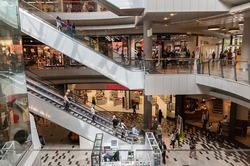
While shopping can be an entertaining pastime as well as a necessary duty, sometimes you can get hurt while at the mall or the local grocery. Shoppers can suffer from accidental injuries in a number of ways. The most common type of accident happens when a customer slips or trips, resulting in fractures or broken bones. Depending on the specific circumstances of the accident, the store owner could be held liable for the victim’s financial losses and pain and suffering.
Fault
In this context, “fault” means that the owners did something wrong or failed to do something they should have done. There can be highly complex factual and legal issues in premises liability cases. On one hand, most would agree that a store is a place that expects to see a lot of foot traffic and needs to be maintained accordingly. On the other hand, some types of hazards cannot be reasonably prevented.
Hazardous condition
First, the slip or trip must have happened because of a hazard, such as a defect in the flooring surface or the presence of a substance or item that increased the chances of someone falling. For example, a spill was not cleaned up, the floor was worn out or damaged, or a piece of debris was left in a high-traffic area.
Knowledge and opportunity to fix or warn
Next, the owner must have known this hazardous condition existed and had a chance to fix it before the accident happened. For example, if someone spilled water and the customer slipped on it immediately afterwards, a court may not hold the store owner responsible, because no one could reasonably expect the owner to fix the problem instantly. On the other hand, if several customers notified a manager about the existence of a spill in one of the aisles, but nothing was done and someone ended up slipping, the likelihood that the court would find the owner liable is higher.
Reasonable expectations
Slip-and-fall cases can also be more difficult to prove if it turns out the customer was behaving carelessly or the fall happened an area closed to the public. Even in such cases, however, there remains the issue of whether the store owner was reasonably careful to take measures that reduced the possibility of accidents. For example, if there was no clear signage indicating that a particular area was off-limits to shoppers, the store owner should have realized that people could traverse that area.
Falls can cause several types of potentially serious injuries that can affect your quality of life. If you slipped in a store or other premises, speak with a qualified premises liability attorney to find out about your options for getting compensation.

